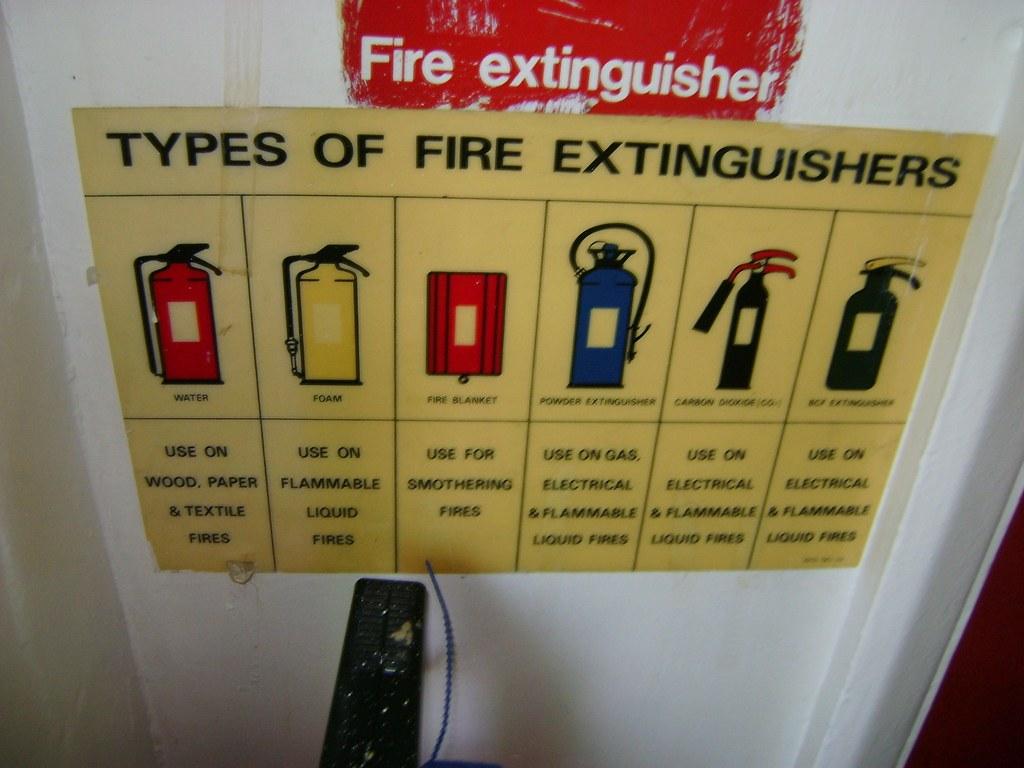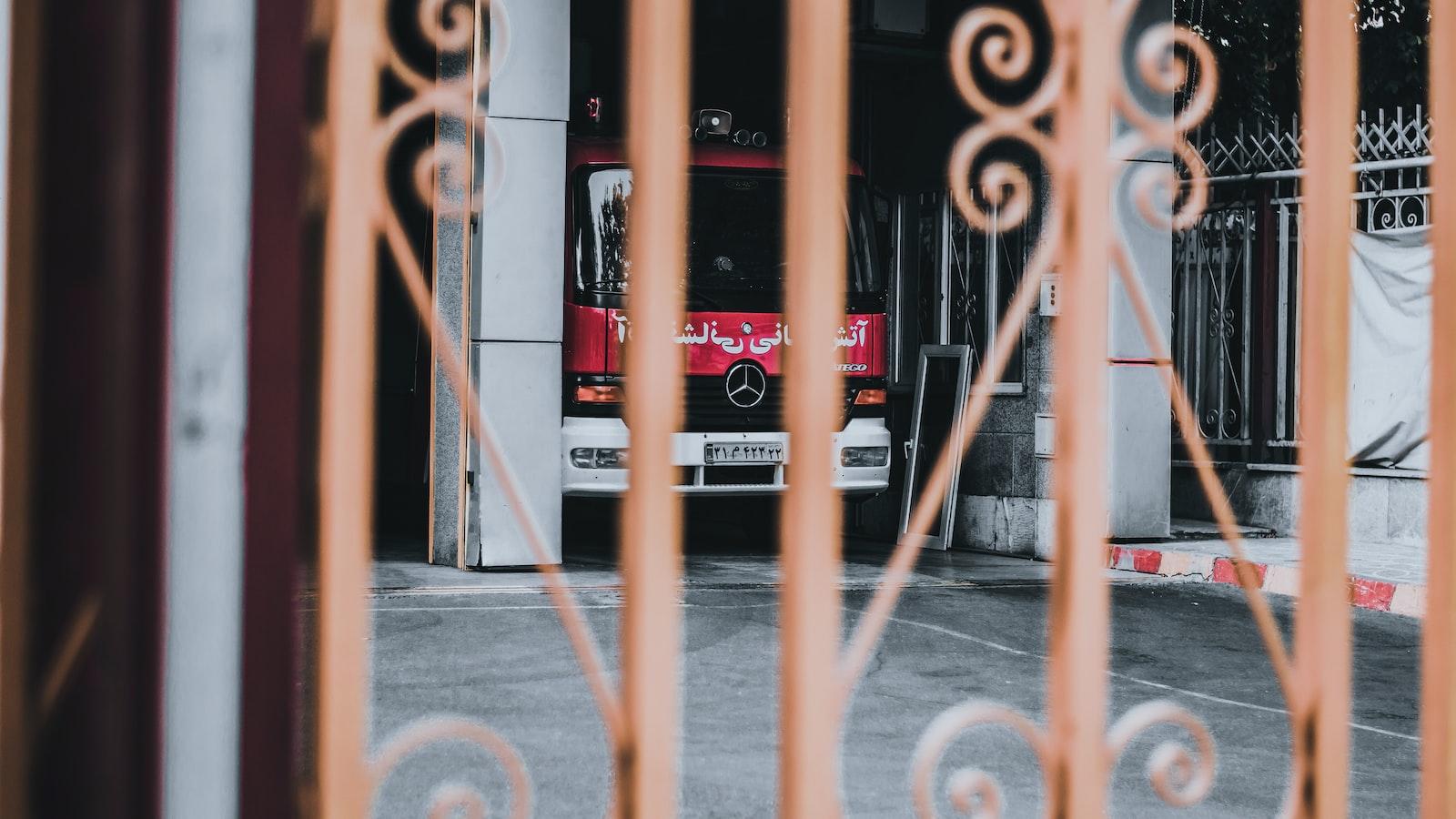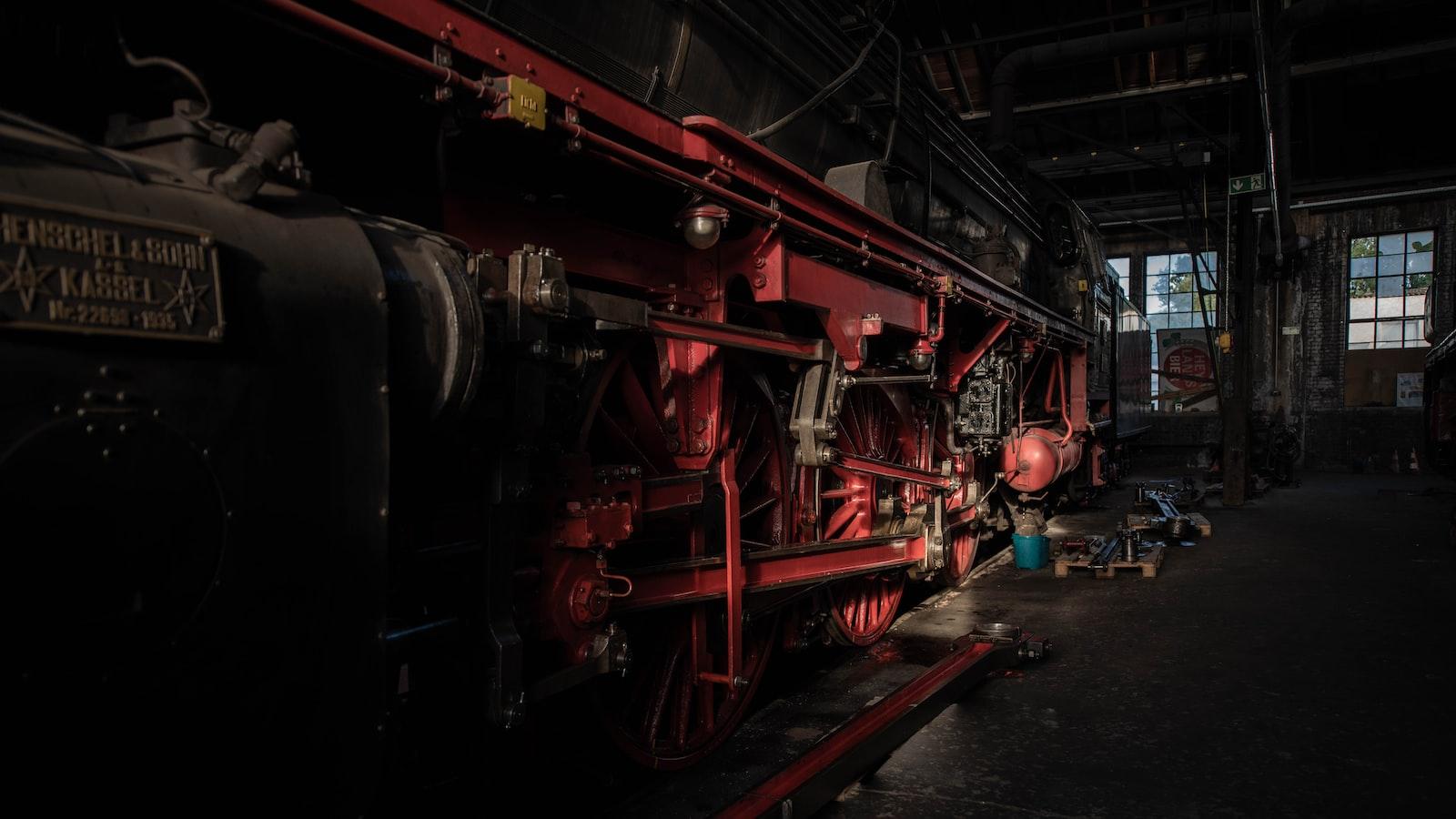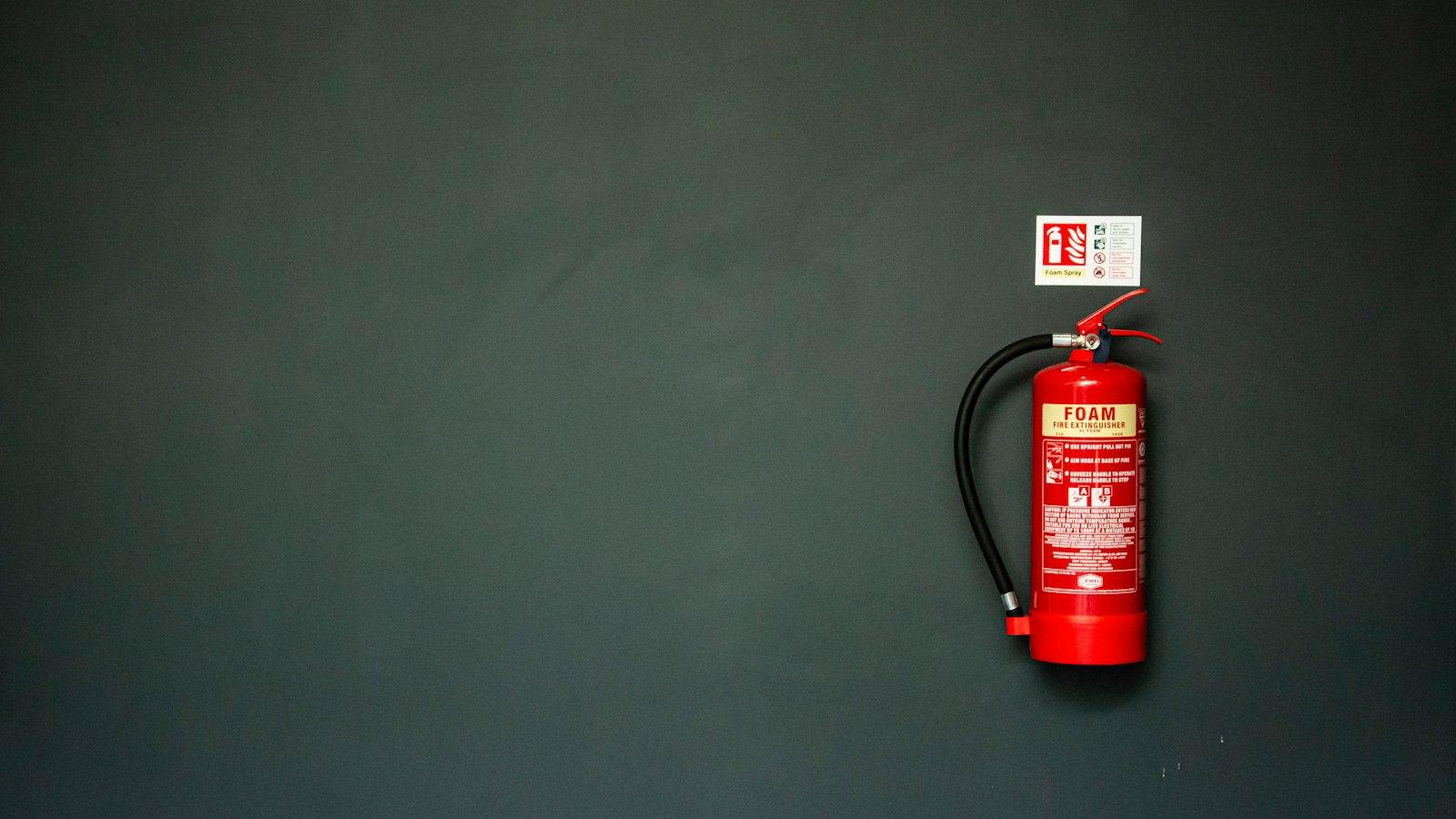
In emergency situations, having the knowledge and confidence to operate a fire extinguisher can mean the difference between containing a small fire and preventing disastrous consequences. Whether you encounter a fire at home, work, or any other location, understanding the correct usage of a fire extinguisher is paramount. In this informative article, we will guide you through a step-by-step process of how to effectively use a fire extinguisher, enabling you to respond swiftly and safely in the face of a fire crisis. With an emphasis on simplicity and clarity, this guide aims to equip you with the necessary skills to tackle small fires while promoting a neutral, informative tone throughout the discussion.
Types of Fire Extinguishers: Understanding the Different Classes and Their Uses
Fire extinguishers are an essential safety tool that every individual should know how to use. Understanding the different types of fire extinguishers and their uses is crucial in effectively combating fires and preventing further damage. By familiarizing yourself with the various classes of fire extinguishers, you can confidently respond to emergency situations.
Class A Fire Extinguishers
Class A fire extinguishers are designed to put out fires that involve combustible materials such as wood, paper, and textiles. These extinguishers contain water or foam and work by cooling the flames and reducing heat. It’s important to note that using water-based extinguishers on electrical fires can be dangerous, so always assess the situation and switch to an appropriate extinguisher if needed.
Class B Fire Extinguishers
For fires involving flammable liquids like gasoline, oil, and grease, Class B fire extinguishers are the most effective. These extinguishers contain substances like carbon dioxide or dry chemicals, which smother the fire and prevent the release of flammable vapors. It’s crucial to aim at the base of the flames and sweep from side to side to extinguish the fire completely.
Class C Fire Extinguishers
Class C fire extinguishers are specifically designed to tackle fires caused by electrical equipment or energized electrical sources. They use non-conductive materials to minimize the risk of electrocution. Carbon dioxide extinguishers are commonly used for Class C fires as they do not leave any residue that may damage sensitive electronics.
Class D Fire Extinguishers
Fires involving combustible metals like magnesium, titanium, or potassium require specific Class D fire extinguishers. These extinguishers use specialized powders to absorb heat and control the chemical reaction of metal fires, preventing them from spreading. As these fires can be extremely hazardous, it’s crucial to leave the area immediately and call emergency services.
Class K Fire Extinguishers
Class K fire extinguishers are designed for fires caused by cooking oils, animal fats, and vegetable fats in commercial kitchens. These extinguishers contain ingredients that react with the burning oil, creating a soapy foam that extinguishes the flames. They are typically found in restaurants and should only be used by trained personnel.
Remember, using a fire extinguisher can be a life-saving skill, but it’s equally important to prioritize your safety. If the fire becomes too large or progresses beyond your control, evacuate the area immediately and call the emergency services. Stay calm, assess the situation, and always be prepared with the appropriate fire extinguisher for the type of fire you may encounter.

Step-by-Step Guide: Operating a Fire Extinguisher Safely and Effectively
Knowing how to use a fire extinguisher is an essential skill that can help protect lives and property in the event of a fire emergency. Follow these step-by-step instructions to ensure you can safely and effectively operate a fire extinguisher when the need arises.
Step 1: Assess the Situation
Before attempting to use a fire extinguisher, you must first assess the situation to determine if it is safe to do so. Consider the following:
- Is the fire small and contained?
- Are you familiar with the type of fire extinguisher you have?
- Do you have a clear escape route?
Step 2: Choose the Right Extinguisher
There are different types of fire extinguishers, each designed for specific types of fires. Familiarize yourself with the type of fire extinguisher you have and ensure it is appropriate for the fire at hand. The most common types are:
- Class A: Designed for fires involving ordinary combustible materials such as wood or paper.
- Class B: Used for fires fueled by flammable liquids like gasoline or oil.
- Class C: Specifically designed for electrical fires.
- Class D: Intended for fires involving combustible metals.
- Class K: Designed for use in commercial kitchens to extinguish fires caused by cooking oils and fats.
Step 3: Remember the PASS Technique
To properly use a fire extinguisher, remember the PASS technique:
| P | Pull the pin, releasing the locking mechanism. |
|---|---|
| A | Aim low, pointing the extinguisher nozzle at the base of the fire. |
| S | Squeeze the handle to discharge the extinguishing agent. |
| S | Sweep from side to side, covering the fire area with the extinguishing agent. |
Step 4: Keep Safety in Mind
While using a fire extinguisher, always prioritize your safety:
- Stand at a safe distance from the fire to avoid inhaling smoke or getting burned.
- Never turn your back on the fire; always have a clear escape route.
- If the fire becomes too big or starts spreading rapidly, leave the area immediately and call for professional help.
Remember, using a fire extinguisher is just one method of fire suppression. It is crucial to evacuate the area and call emergency services, even if you can effectively tackle the fire. Your safety should always be the top priority.

Common Mistakes to Avoid: Tips for Proper Fire Extinguisher Usage
When it comes to fire safety, knowing how to use a fire extinguisher is crucial. However, there are several common mistakes that people often make when trying to use a fire extinguisher effectively. By understanding these mistakes and learning how to avoid them, you can ensure that you are properly prepared to handle a fire emergency.
One common mistake to avoid is not knowing the type of fire extinguisher to use for a specific fire. There are different types of fire extinguishers designed to combat different types of fires, such as Class A, Class B, and Class C fires. It is important to know which type of fire extinguisher is suitable for the type of fire you may encounter. This information is usually displayed on the extinguisher itself or in the user manual.
Another mistake to avoid is failing to aim the fire extinguisher properly. When using a fire extinguisher, it is important to aim at the base of the fire rather than the flames. By targeting the base, you can effectively extinguish the fire’s source and prevent it from spreading further. Remember to stand at a safe distance and use a sweeping motion to cover the entire area of the fire.
Not checking the pressure gauge regularly is another common mistake. It is important to inspect your fire extinguisher regularly to ensure that it is fully charged and ready for use. Check the pressure gauge to verify that the extinguisher is within the recommended range. If the pressure is too low, it may not be able to effectively extinguish a fire. Follow the manufacturer’s instructions for recharging or replacing the extinguisher if necessary.
Using the wrong type of fire extinguisher for electrical fires is another mistake that should be avoided. Class C fires involve electrical equipment, so using a water-based extinguisher could potentially worsen the situation and put you at risk of electric shock. It is essential to use a fire extinguisher specifically designed for electrical fires, such as a carbon dioxide extinguisher, which does not conduct electricity and can safely extinguish the fire.
Finally, not having a fire extinguisher readily accessible in the first place is a major oversight. It is important to have fire extinguishers strategically placed throughout your home or workplace, especially in areas where fires are more likely to occur. Store them in easily accessible locations, such as near exits or in the kitchen. Make sure that everyone in your household or workplace knows where the fire extinguishers are located and how to use them.
Remember, having a fire extinguisher is only half the battle; knowing how to use it correctly is equally important. By avoiding these common mistakes and following proper fire extinguisher usage guidelines, you can protect yourself, your loved ones, and your property in the event of a fire emergency. Stay safe and be prepared.
Maintenance and Inspection: Keeping Your Fire Extinguisher in Prime Condition
Regular maintenance and inspection of your fire extinguisher is crucial to ensure it is in an optimal condition to fight fires effectively. By following these simple steps, you can keep your fire extinguisher ready for any emergency situation.
-
Visual Inspection:
Regularly inspect your fire extinguisher for any signs of damage or wear. Look for dents, rust, leaks, or any other visible damage that may affect its functionality. Additionally, check the pressure gauge to ensure it is within the green zone, indicating that the extinguisher is charged and ready for use. Perform this visual inspection at least once a month. -
Pressure Check:
To perform a pressure check, gently push or tap the pressure gauge on the fire extinguisher. If the needle on the gauge moves, it means the unit is pressurized and functioning properly. If there is no movement in the gauge, it indicates that the extinguisher needs to be recharged or replaced. -
Clean and Maintain:
Keep your fire extinguisher clean and free from any obstructions. Remove any dust or debris from the nozzle or hose using a soft cloth or brush. Avoid using water or any cleaning agents, as they may damage the unit. Regularly check the safety pin to ensure it is intact and easily accessible. Store your extinguisher in a cool and dry place, away from direct sunlight and corrosive substances. -
Annual Professional Inspection:
In addition to regular maintenance, it is important to have your fire extinguisher professionally inspected at least once a year. During this inspection, a certified technician will thoroughly inspect and service your fire extinguisher, ensuring that it meets all safety standards and is in proper working condition. They will also recharge or replace the extinguisher if necessary. -
Training and Familiarity:
Even with a well-maintained fire extinguisher, it is crucial to have the knowledge and training to use it effectively. Familiarize yourself and your family members with the proper way to operate a fire extinguisher. Remember the acronym ”PASS” – Pull the pin, Aim at the base of the fire, Squeeze the handle, and Sweep from side to side. Practice using a fire extinguisher on a regular basis to build confidence and muscle memory.
By following these maintenance and inspection guidelines, you can be confident that your fire extinguisher is in prime condition and ready to be used in case of a fire emergency. Remember, fire safety is everyone’s responsibility, and ensuring the effectiveness of your fire extinguisher is an essential part of that. Stay prepared and stay safe!
When to Use a Fire Extinguisher: Identifying Fire Emergencies That Can Be Managed Safely
Fires can happen unexpectedly and it’s crucial to know when to use a fire extinguisher to protect yourself and others. However, not all fire emergencies require the use of a fire extinguisher. Identifying the type of fire and assessing its severity are essential steps to determine if you can safely handle it with a fire extinguisher. Let’s explore the different scenarios where a fire extinguisher can be effectively utilized.
1. Small Class A Fires:
Fires involving ordinary combustible materials like wood, paper, cloth, or rubber are classified as Class A fires. If the fire is small and contained, and you have the appropriate fire extinguisher nearby, you can attempt to extinguish it. Remember the acronym PASS: pull the pin, aim at the base of the fire, squeeze the handle, and sweep from side to side. Be cautious and evacuate immediately if the fire grows or becomes uncontrollable.
2. Small Class B Fires:
Class B fires involve flammable liquids such as gasoline, oil, grease, or solvents. If the fire is small and you have a fire extinguisher rated for Class B fires, you can use it to smother the flames. Use the PASS method to ensure proper extinguisher operation. Note that if the burning liquid is spreading rapidly or the fire is spreading beyond its initial source, it’s safer to evacuate and call for professional help.
3. Small Class C Fires:
Electrical fires, categorized as Class C fires, pose unique risks due to the involvement of live electrical equipment. Attempting to extinguish these fires without cutting off the power source can be extremely dangerous. In such cases, prioritize your safety and evacuate the premises. Contact emergency services and alert them to the presence of an electrical fire. Only if you’ve received training and are confident in your abilities should you consider using a Class C fire extinguisher with a non-conductive agent.
4. Cooking Fires:
As common as they are, kitchen fires can quickly escalate. Never try to extinguish a grease fire with water as it can exacerbate the flames. Instead, use a fire extinguisher designed for Class K fires, specially formulated to effectively suppress high-temperature fires caused by cooking oils and fats. If the fire grows rapidly, it’s critical to evacuate immediately and call emergency services for help.
5. Workplace Fire Safety:
In a workplace setting, it’s essential to have proper fire safety protocols in place. Ensuring employees are trained in fire extinguisher usage can significantly minimize risks. Consider implementing fire safety drills and educating staff on identifying when to use a fire extinguisher. Displaying clear fire extinguisher location signs can also expedite response times during emergencies. Regular inspection and maintenance of fire extinguishers are vital for their reliable functionality.
Q&A
Q: Why is it important to know how to use a fire extinguisher?
A: Knowing how to use a fire extinguisher is crucial because it empowers individuals to quickly and effectively respond to small fire emergencies. This knowledge can help prevent fires from spreading and reduce property damage, as well as potentially save lives.
Q: What are the different types of fire extinguishers available?
A: There are various types of fire extinguishers designed to tackle different types of fires. The most commonly used types include: Class A (ordinary combustibles like wood or paper), Class B (flammable liquids or gases), Class C (electrical fires), Class D (flammable metals), and Class K (cooking oils and fats).
Q: How do I choose the right fire extinguisher for my needs?
A: It is crucial to select the appropriate fire extinguisher based on the potential fire hazards in your environment. Understanding the fire classes and their corresponding extinguishers will help you make an informed decision. Consider the specific risks present in your home, workplace, or vehicle to determine which type(s) of extinguisher you should have on hand.
Q: How should I inspect a fire extinguisher before using it?
A: Before using a fire extinguisher, perform a quick inspection to ensure it is in working order. Check for visible damage, such as dents or leakage, and ensure the pressure gauge shows the needle in the green zone. Additionally, verify that the extinguisher is not expired and that the safety pin is intact and undamaged.
Q: What is the PASS technique for using a fire extinguisher?
A: The PASS technique stands for:
- P: Pull the pin, which unlocks the operating lever.
- A: Aim low, pointing the extinguisher nozzle at the base of the fire.
- S: Squeeze the lever slowly to discharge the extinguishing agent.
- S: Sweep the nozzle from side to side, covering the fire with the extinguishing agent until it is fully extinguished.
Q: Are there any precautions I should take while using a fire extinguisher?
A: Yes, it’s important to keep your safety in mind. Always attempt to use a fire extinguisher only if the fire is small and contained. If the fire starts spreading rapidly, evacuate the area and call emergency services immediately. Ensure you have a clear escape route and avoid exposing yourself to excessive smoke or heat.
Q: How often should a fire extinguisher be serviced?
A: Fire extinguishers should be professionally serviced annually to ensure they are in proper working condition. Additionally, some extinguishers require maintenance every few years or at specific intervals, as indicated on the extinguisher label. Regular maintenance and inspections are critical for optimal performance.
Q: Can I use a fire extinguisher to put out any fire?
A: While fire extinguishers are effective at combating small fires, it is essential to understand their limitations. Extinguishers are intended for use only on small, contained fires. For larger fires or those beyond your control, evacuate immediately and contact emergency services to handle the situation professionally.
Q: Should I receive training on how to use a fire extinguisher?
A: Yes, it is highly recommended to receive proper training on fire safety and how to use a fire extinguisher correctly. Many organizations and fire departments offer fire safety courses where you can learn practical skills and gain confidence in handling fire emergencies. In conclusion, knowing how to use a fire extinguisher is an essential skill that can save lives and property in emergency situations. By carefully following these simple steps, you can quickly and effectively tackle small fires before they escalate. Remember, always prioritize safety first, ensuring you have a clear path to escape if needed. Regularly inspect, maintain, and familiarize yourself with the fire extinguishers in your surroundings. Be proactive in learning and sharing this knowledge with others, as it can make a significant difference in preventing and minimizing the impact of fires. With the right knowledge and preparedness, we can create a safer environment for ourselves and those around us. Stay informed, stay vigilant, and stay safe!






